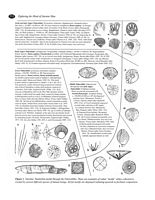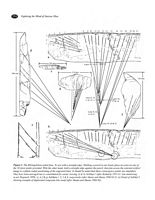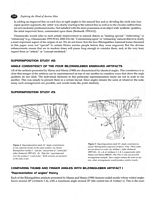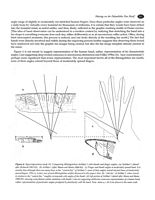Reflexiones en el motif radial Paleolítico
John Feliks (Vuelva al inglés - Return to English) HTML con texto completo aquí
 Fig. 1 |
 Fig. 2 |
 Fig. 3 |
| Publicaciones de anthro: | El impacto de fósiles | Reflexiones en el motif radial Paleolítico | Los gráficos de Bilzingsleben | Phi en el Acheulian |
| Publicaciones, pelicula & Programas artisticos | Épocas de la antigüedad | Coalición Pleistoceno |
 Fig. 1 |
 Fig. 2 |
 Fig. 3 |
Abstract: For much
of the past century, human beings prior to 35,000 years BP have been generally
regarded as greatly inferior to modern Homo sapiens. However, the early
human chronicle is undergoing dramatic revision. A growing list of capabilities
once attributed only to our species is now being traced as far back as
Acheulian times and our ancient predecessor Homo erectus. A major
breakthrough in this transition was Robert Bednarik’s theory that a graphic
marking motif, essentially the “fan” motif, began to be developed by Homo
erectus as early as 350,000 years ago. In this paper, I offer studies that
support Bednarik’s theory and the linked ideas of language and self-awareness
during the
 *Musings on the Palaeolithic Fan Motif is one of four thesis papers
offering a completely new perspective regarding early peoples such as
Homo erectus, Homo ergaster, Neanderthals, and Homo heidelbergensis. It was a "requested" paper first submitted for review
and publication on August 9, 2004. This page shows five of the paper's
seven figures. Click on each thumbnail for an enlarged view. You
can then click on that image for an even larger image showing
more detail.
*Musings on the Palaeolithic Fan Motif is one of four thesis papers
offering a completely new perspective regarding early peoples such as
Homo erectus, Homo ergaster, Neanderthals, and Homo heidelbergensis. It was a "requested" paper first submitted for review
and publication on August 9, 2004. This page shows five of the paper's
seven figures. Click on each thumbnail for an enlarged view. You
can then click on that image for an even larger image showing
more detail. Duplicated
motifs (such as written or spoken words) are the hallmark of language.
Prior to recognizing these two motifs as either duplicates or
variations of each other, most proponents of early language used
unrelated references to "infer" language in early peoples, e.g., "If
they could get from
here to there then they must have had language," or "If they had the
right vocal tract or the right genetic traits, they probably had a
simple language." The
association between these two motifs and similar associations between
other motifs at Bilzingsleben were fully
demonstrated with final and unambiguous proofs in the censored data presented in The Graphics of
Bilzingsleben.
Duplicated
motifs (such as written or spoken words) are the hallmark of language.
Prior to recognizing these two motifs as either duplicates or
variations of each other, most proponents of early language used
unrelated references to "infer" language in early peoples, e.g., "If
they could get from
here to there then they must have had language," or "If they had the
right vocal tract or the right genetic traits, they probably had a
simple language." The
association between these two motifs and similar associations between
other motifs at Bilzingsleben were fully
demonstrated with final and unambiguous proofs in the censored data presented in The Graphics of
Bilzingsleben.Feliks, J. 1998. The impact of
fossils on the development of visual representation. Rock Art Research 15: 109-34.
Feliks, J. 2006. Phi in the Acheulian: Lower Palaeolithic intuition and the natural origins of analogy. In Bednarik, R. G. and D. Hodgson (eds), Pleistocene palaeoart of the world, pp. 11-31. Proceedings of the XV UISPP World Congress (Lisbon, 4-9 September 2006), BAR International Series 1804, Oxford.
Feliks, J. 2009. A Lot of Gold in the Mix: Review of Fragment from a Nonfiction Reader. Pre-publication review of the debut science thriller by Warren Fahy (see quotation on the author's review page under FRAGMENT: Reviews).
Feliks, J. 2009 (in press). The graphics of Bilzingsleben: Sophistication and subtlety in the mind of Homo erectus. Proceedings of the XV UISPP World Congress (Lisbon, 4-9 September 2006), BAR International Series, Oxford.
(BAR es British Archaeological Reports.)
SOBRE EL AUTOR Y LA PREMISA DEL WEB SITE